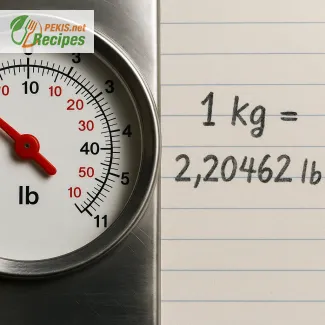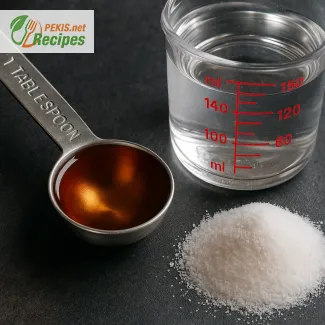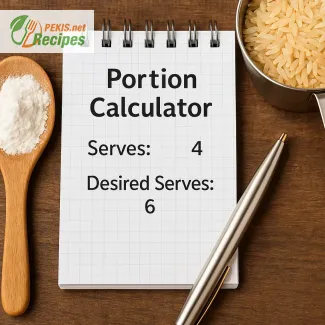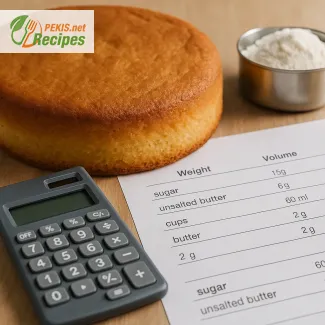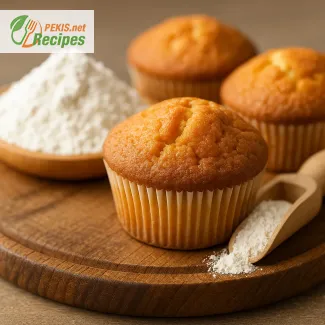
Convert Pounds to Kilograms Easily for Cooking and Food Prep
A practical weight guide for home cooks, bakers, and meal planners
Knowing how many lbs are in a kg can be incredibly useful in the kitchen, especially when you come across recipes from other countries or need to adjust ingredient quantities for meal prep or portion control. Whether you’re baking bread with imported flour or preparing a protein-rich dish based on nutritional values listed in kilograms, understanding this basic weight conversion helps avoid guesswork and ensures consistency.
This article is designed for home cooks, baking enthusiasts, and anyone who shops or cooks using both imperial and metric units. You’ll find clear explanations, realistic kitchen examples, and practical conversion tips that make switching between pounds (lbs) and kilograms (kg) simple, accurate, and intuitive.
Why pounds to kilograms matters in the kitchen
Most American and British recipes use pounds and ounces, while the rest of the world – including Europe – relies on kilograms and grams. This creates a unique challenge for anyone using international cookbooks, shopping in global food markets, or following online meal plans. Even a small error in conversion could lead to an unbalanced dish or improperly portioned ingredients.
Let’s say a recipe from the UK calls for “1.5 kg of chicken,” and you’ve only ever measured meat in pounds. Without a reliable conversion, you may under- or overestimate by hundreds of grams. That’s why learning to convert between lbs and kg accurately is an essential skill, not just for professional chefs but for anyone passionate about food.
The exact formula for converting lbs to kg
The formula to convert pounds to kilograms is simple but crucial:
1 pound = 0.453592 kilograms
To reverse the formula:
1 kilogram = 2.20462 pounds
This means that if your recipe or label mentions 5 lbs of apples, it equals 2.27 kg. Conversely, 3 kg of flour equals approximately 6.61 lbs.
Quick conversions you’ll use often in the kitchen
While it’s good to know the formula, most home cooks prefer quick approximations for everyday cooking. Here are a few key conversions that can save time:
- 1 lb ≈ 0.45 kg
- 2 lbs ≈ 0.91 kg
- 5 lbs ≈ 2.27 kg
- 10 lbs ≈ 4.54 kg
- 1 kg ≈ 2.2 lbs
- 2 kg ≈ 4.4 lbs
- 5 kg ≈ 11 lbs
These approximations are usually accurate enough for recipes that don’t require scientific precision, such as roasting vegetables or marinating meat.
When exact conversions matter most
There are situations where precision really matters. For example:
- Baking: Ingredient ratios are critical. A slight miscalculation in flour or butter can ruin the texture.
- Dietary planning: Portion sizes based on macros require accurate protein, fat, and carb weights.
- Nutrition tracking: Many food labels in Europe show nutrition per 100g or per kg. If your scale reads in pounds, you’ll need to convert.
- Canning and preserving: Exact weights are essential for safe and repeatable results.
In these cases, using a digital kitchen scale with both imperial and metric settings is highly recommended.
Common kitchen scenarios for lbs to kg conversions
Shopping in international food markets
If you're at a European farmer’s market and see a sign for “Tomates – 2.5 kg”, it helps to know that’s about 5.5 lbs of tomatoes. Understanding that difference lets you plan your meals better and avoid food waste or shortages.
Meal planning for families
Let’s say you want to cook 1.5 lbs of chicken per person for a weekend barbecue. That’s about 0.68 kg per guest. Multiply that by six people, and you need just over 4 kg of chicken. These quick estimates help you buy the right amount.
Adjusting foreign recipes
You find an Italian recipe for fresh pasta that uses 1 kg of flour. If your pantry only has measurements in pounds, you’ll need to know that’s about 2.2 lbs – otherwise, your pasta may turn out dry or sticky.
Tips for remembering common conversions
If you struggle to remember the numbers, think in pairs:
- 1 lb → 0.45 kg
- 2.2 lbs → 1 kg
- 10 lbs → 4.5 kg
Over time, you’ll begin to recognize common weights by sight and habit. It’s similar to learning oven temperatures in Fahrenheit vs. Celsius – with practice, it becomes second nature.
Digital tools that help with conversions
There are plenty of online calculators and apps designed specifically for cooking conversions. Most smart kitchen scales also offer dual-display options, switching between grams, ounces, pounds, and kilograms. Some modern recipe websites include toggle buttons for imperial and metric measurements, making it easier than ever to follow along.
If you don’t have access to these tools, remember this quick hack:
Multiply pounds by 0.45 to get kilograms
Multiply kilograms by 2.2 to get pounds
It may not be exact to the gram, but it’s close enough for nearly every recipe you'll encounter.
Converting larger weights for bulk cooking
If you're preparing meals in bulk – for example, 20 lbs of rice for a community event – you'll need to know that equals around 9.07 kg. For professional kitchens, school canteens, or catering businesses, converting large quantities from lbs to kg ensures proper supply ordering and cost calculation.
Why it’s useful for bakers and meal preppers
Meal preppers, especially those who weigh their food for macro tracking, rely heavily on accurate conversions. Similarly, bakers often import recipes from Europe or Australia, where all dry ingredients are measured in grams or kilograms. Using a scale and being fluent in these conversions keeps their results consistent and predictable.
Mastering weight conversions
Being comfortable with lbs and kg is more than a math trick — it's a way to feel confident in your cooking, flexible with international recipes, and precise when needed. While smartphones and smart scales offer support, having the knowledge in your head means you can cook anywhere, with any recipe, and understand what you're doing.
So the next time you see “5 lbs of flour” or “3 kg of potatoes,” you won’t flinch — you’ll know exactly what it means and how much food you’re working with.
And that’s a skill every great cook deserves to have.
